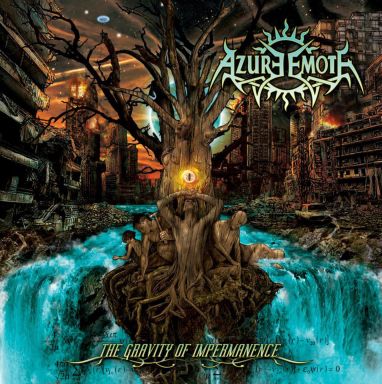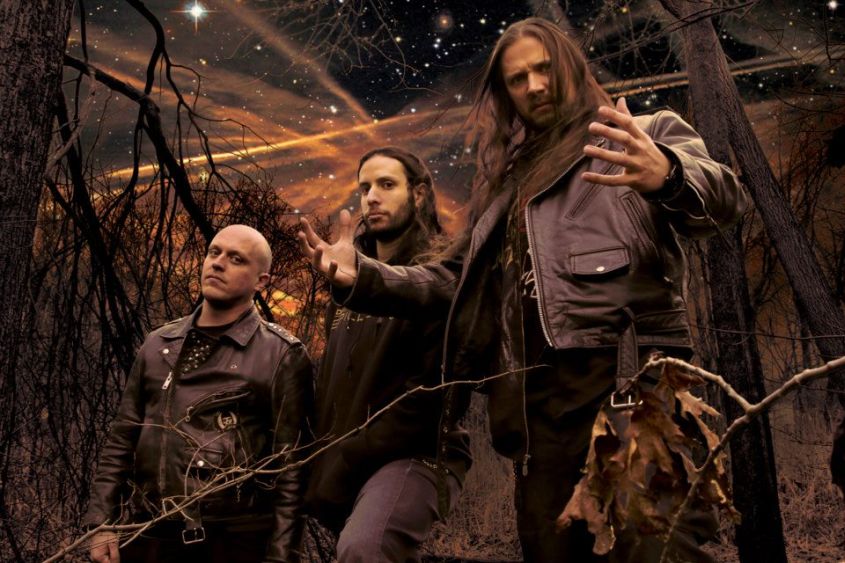Album autoprodotto (Aprile 2013)
Formazione (2004): Stefano Nicolini – voce/chitarra;
Francesco Armani – basso/voce;
Dennis Valenti – batteria.
Località: Pieve di Bovo (Trento), Trentino Alto – Adige.
Canzone migliore dell’album:
“Carcassa Silente”.
Punto di forza del disco:
la sua devastante e fantasiosa follia.
Qualche anno fa comprai in una libreria Feltrinelli uno dei libri musicali più profondi che io abbia mai letto, cioè “Post – Punk: 1978 – 1984” del giornalista inglese Simon Reynolds, un mattone di circa 700 pagine che non dà spazio soltanto alla musica ma anche ai testi e allo stile di vita dei moltissimi gruppi da lui affrontati. E fra di essi figurano i Gang of Four, banda britannica fra le più influenti in circolazione (fra i tanti, ha ispirato addirittura i Red Hot Chili Peppers). Non a caso, sembra che anche gli Eco del Baratro, al secondo album dopo quello di debutto di 2 anni fa, risentano della loro influenza (però nelle loro influenze principali i 4 di Leeds non ci sono affatto), seppur declinata in una maniera parecchio personale e pesante. Fra l’altro, con un gruppo simile, Timpani allo Spiedo allarga notevolmente il proprio raggio d’azione, recensendo per la prima volta un disco post – punk. Che poi io non sia molto d’accordo nell’usare il prefisso “post” (dopo che cosa, se il punk puro non è morto, tanto che si fa la logica distinzione fra quello vecchia scuola e quello moderno implicando così che una sua evoluzione vera ci sia stata?) è tutta un’altra storia.
Passando a cose serie, “Azione” consta di 10 pezzi per circa 35 minuti di delirio sonico. La musica è nervosa e scarna, risulta caratterizzata da una chitarra (nessuna sovraincisione, mentre gli assoli sono totalmente banditi) che più che sputare riffs vomita rasoiate saltellanti e ritmiche visto che spesso è il basso ad assumere in sua vece un ruolo melodico. La batteria invece si diverte a far impazzire l’ascoltatore creando ritmi contorti e particolari, seppur non disdegni partiture più lineari e/o groovy se non persino belle veloci come il punk/HC comanda (come in “Testa di Cane” o “Carcassa Silente”). Poi, c’è l’eccellente comparto vocale, un intreccio di voci e coretti molto espressivo e vario capace di adattarsi perfettamente al tono delle canzoni ma anche di completarlo alla grande, come nei lamenti quasi infantili di “Testa di Cane” o nei vocalizzi visionari di “Carcassa Silente”. Ah, ovviamente ricordo che le voci sono pulite, e i ritornelli sono spesso e volentieri ben cantabili… anche sotto la doccia, se volete.
La struttura delle canzoni si dimostra veramente ma veramente ostica visto che i nostri amano essere ossessivi a 360° gradi, sia mantenendo lo stesso tempo per tutto un pezzo, sia ripetendo fin quasi allo stremo piccoli schemi 1 – 2, e lo si fa pure con un singolo passaggio (quest’ultimo caso avviene solitamente nei momenti finali di un brano). In pratica, la struttura è di tipo sequenziale e paranoica. Inoltre, può capitare che la chitarra proponga delle variazioni, semplici e brevi, della propria melodia principale, quasi come se fossero degli assoli, riuscendo così splendidamente a dare ariosità ai pezzi.
Un’altra ottima caratteristica dell’album proviene dalla differenziazione, anche umorale, fra i vari brani. Si passa così dai toni beffardi e quasi giocosi di “Nuovo Giorno” alle agghiaccianti “Carcassa Silente” e “Il Nemico Sbagliato” e al taglio malinconico/melodico di “Sull’Erba”, pezzo che alla fine diventa bello veloce. Fra l’altro, devo dire di aver colto qualche differenza fra la prima e la seconda parte del disco, dato che l’una è più lineare, “groovy” e veloce, mentre l’altra possiede toni più scuri, ritmi più spezzettati e contorti (quindi più lenti) e una follia più accentuata del solito (sentitevi “Il Nemico Sbagliato” e poi ditemi).
Ecco, l’unico difetto, più formale che sostanziale a dire il vero, dell’album viene proprio dalla distribuzione dei pezzi, che a poco a poco diventano sempre più difficili (e geniali) da seguire. Quindi, credo che un bilanciamento più marcato fra le due parti sarebbe servito per far fiatare meglio l’ascoltatore, magari mettendo la 3° canzone, cioè “Divisione”, che è perlopiù veloce, fra le ultime.
In definitiva, “Azione”, è un signor album, con tanto di produzione limpida e secca, testi ermetici, un coraggio notevole nel sapere osare (e giocare) anche con i suoni (infatti – dimenticavo! – qua e là c’è una specie di effetto elettronico che spesso assomiglia a uno scacciapensieri posseduto… e ho l’impressione che sia il basso… o no?), e una follia malata che potrebbe competere tranquillamente con quella dei migliori Vlad Tepes, Bestial Warlust, Voivod, Meshuggah e compagnia metal varia. E’ veramente difficile volere di più, non credete?
Voto: 90
Flavio “Claustrofobia” Adducci
Scaletta:
1 – Nuovo Giorno/ 2 – Testa di Cane/ 3 – Divisione/ 4 – Sballata/ 5 – Muse d’Acqua/ 6 – Carcassa Silente/ 7 – Il Nemico Sbagliato/ 8 – Sull’Erba/ 9 – Gioia Eterna/ 10 – 10 Secondi di Stupore
FaceBook:
BandCamp:







